In the middle of the increasing popularity of houseplants and gardening, especially during the pandemic, home gardeners have advanced from struggling to maintain one succulent alive to being proficient at handling multiple different kinds of plants. There is one group of plants that almost any intermediate or advanced gardener cannot miss out on in their home: low light indoor trees.
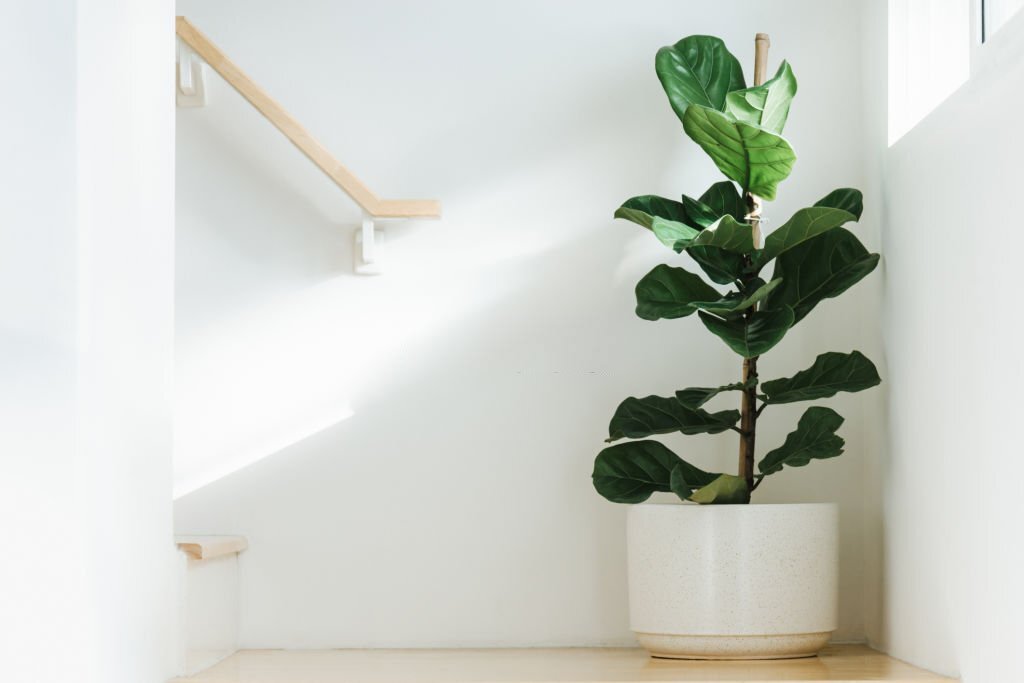
The best indoor trees can serve as the pièce-de résistance of any indoor space, such as your receiving area, guest room, or even your dining area. They can tower even the tallest of furniture like no other house decorations can!
Can you grow trees indoors?
When grown under the right conditions, indoor plants can establish themselves with deep root systems for several years, making them easy to care for even when it comes to their light demands. In fact, there are various species of potted plants that thrive in low light conditions.
More often than not, most trees prefer as much bright indirect sunlight as possible. However, these low-light indoor trees maintain their growth and would not show signs of stress in the darker corners of a home environment.
If you find that your home’s brightest windows and spaces are already occupied with more picky plants, then the fifteen trees listed below should be perfect for you.
1. Rubber Plant
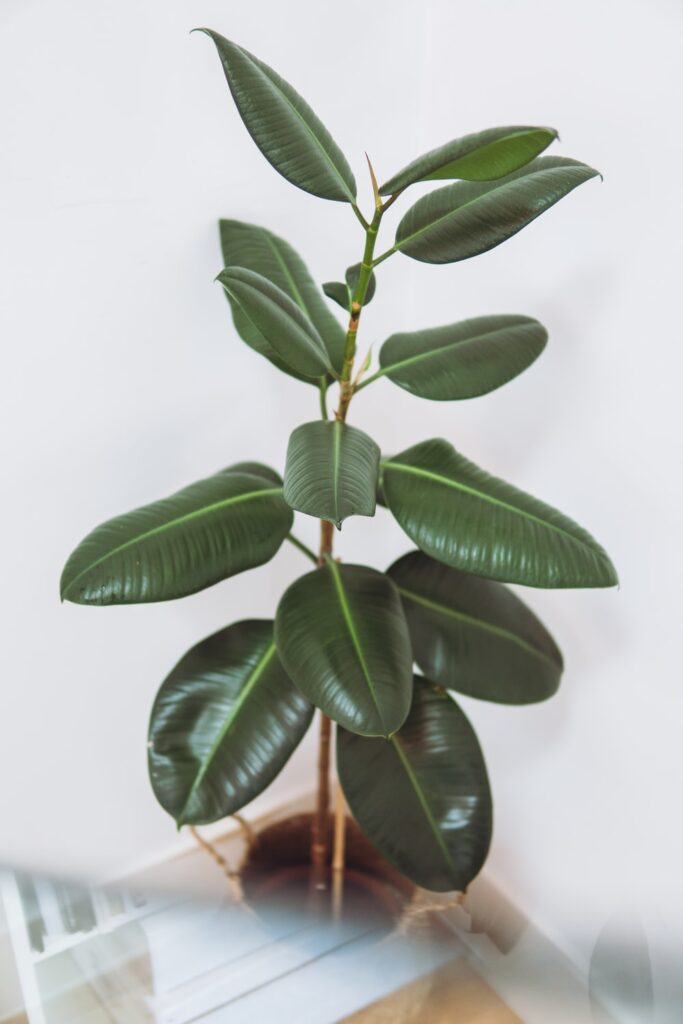
The rubber plant is featured as one of the most regarded indoor plant lists and ranking, and for a good reason! When given enough breathing room, this plant grows anywhere from 6-10 feet tall and even higher when grown outdoors. Depending on your variety, their leaves could be vividly green, trichromatic, or even deep black.
You will not find any trouble placing this plant anywhere in your home as they suit most indoor environments quite well. Their wide-spanning and lustrous leaves will either blend with the other plants already inside your indoor garden or will serve to solely stand out as the centerpiece of your space.
Since rubber plants are tropical, they especially thrive indoors, where there are usually low light conditions. If you’re planning to get one, get a taller and more established plant, as smaller rubber plants will grow slowly in low-light environments. When they do reach their optimal height, they will have no trouble thriving in lower light.
These plants also do not demand too much attention as they do tolerate neglect quite well. They enjoy moist soil but will definitely tolerate drying out before their next drink.
2. Dragon Tree
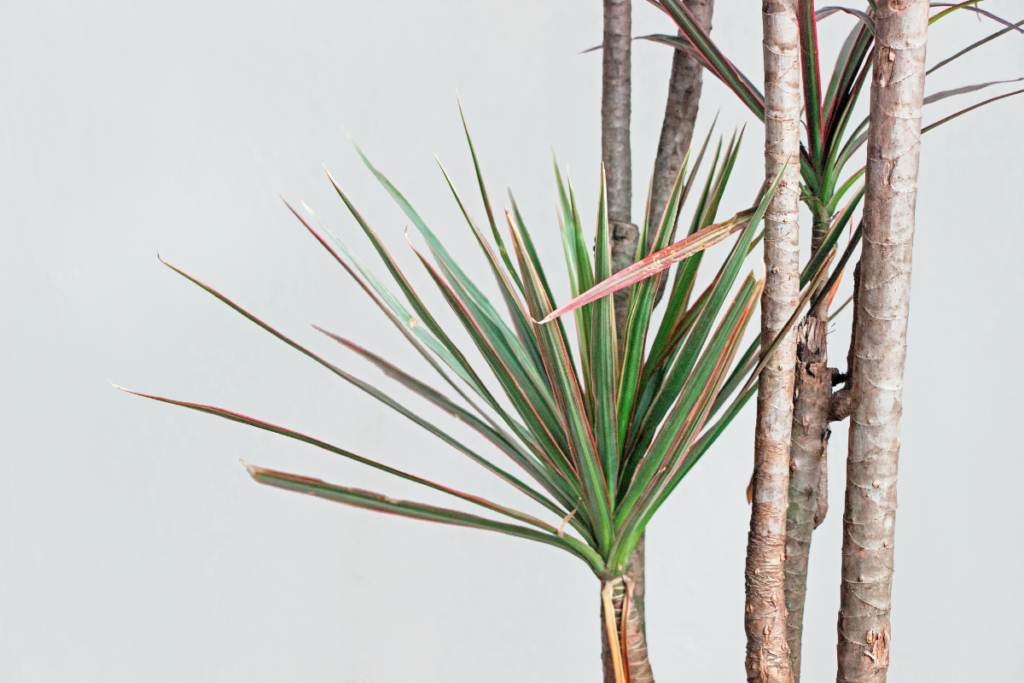
Dragon trees, also known as Dracaena in their scientific name, are renowned for their hardy and hard-to-kill nature, making them ideally suited for gardeners who are newer in the scene. Despite their sun-loving nature, they still do thrive in the more overcast parts of your living space, with the only downside being they will grow slower.
They serve as noteworthy additions to any room. Their slender, blade-like leaves are bordered by red or purple colors depending on their variety and add a chic and snappy texture to your space.
Madagascar Dragon Tree is the epitome of effortlessness when it comes to care, as this plant will only need water once its soil has completely dried out. If there is anything the plant cannot tolerate is cold and dry air, so it is best to keep it away from air-conditioned rooms or windows that receive a lot of air.
3. Lady Palm
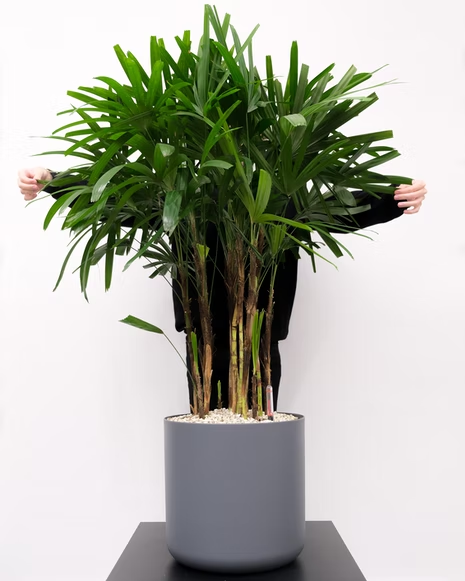
Also known as Rhapis excelsa, these plants have bundled, fan-like leaves that definitely make up for their shorter stature. It is an ideal indoor tree as not only does it tolerate low-light environments, but it definitely thrives in it as well. They also tolerate the typical temperatures you would find in a home environment. These plants will fit any corner with their fronds, filling any possible space in which it is placed.
When Lady Palms are established, they start to tolerate long dry periods, but it is still vital not to neglect this plant too much as compared to the others on this list. Even though they’re a bit drought tolerant, they thrive best with regular drinks and additional nutrition.
In hotter weather, they may need water as soon as the top layer of soil feels dry. The warmer seasons also demand monthly feeding with a liquid fertilizer as this is the period where they grow faster. In colder months, they won’t need as much water and fertilizer as they do during warmer climates.
Other than these specifics, lady palms are accommodating when it comes to their care, needing the ever so occasional prune to maintain their foliage and help rid of dead or dying fronds.
4. Weeping fig (Ficus benjamina)

Another Ficus tree that is best for indoor scaping is this Weeping Fig, scientifically known as Ficus benjamina. The Weeping Fig got its name because of its appearance, which resembles the Weeping Willow, with its arched, delicate stems and narrow arrow-shaped leaves. The leaves of this are dark green or adorned with white marginal variegation.
The Weeping Figs are known to be native to Australia and Asia. Hence they low warmer environments. They can be fussy and prone to dropping leaves when put in an unstable environment. To avoid this, keep the plant in one place, away from cold drafts or heat-radiating sources like refrigerators and induction cookers.
The common names of this Tree are Java Fig, Benjamin Fig, or Ficus. They can grow up to 1.8 meters tall indoors, with a spread of 1.2 meters. They thrive best in indirect sunlight in windows facing the south or west. Figs have a slow growth rate.
RELATED: Blooming Beautiful: 22 Different Types Of Orchid Trees
5. Parlor Palm
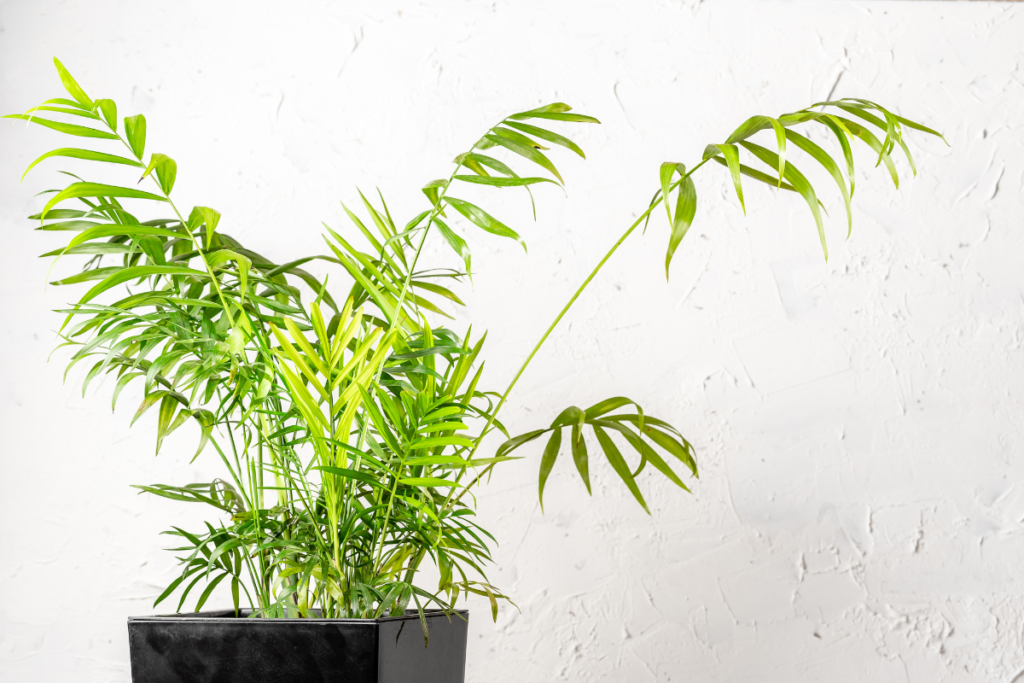
The Chamaedorea elegans, also known as the parlor palm, are one of the first plants that come to mind when a seasoned gardener thinks of an indoor tree (probably second only to the rubber plant). Their indoor use for decor goes as far back as the Victorian era, where they were literally kept as decorative parlor plants.
Ever since then, they continued to be regarded as the first go-to plant for gardeners venturing into indoor tree gardening. Its tropical-like vibe is thanks to its narrow leaves attached to its ridged, bamboo-like stem. This plant gives your room a touch of warmth reminiscent of summer. Adding to its popularity is its undemanding care requirements.
Their hardy nature means that they adapt quickly to indoor conditions and will thrive in the low light conditions of a typical home. Once established, they will also start to tolerate some neglect. Parlor palms are drought tolerant and require little watering compared to the others on this list. For this plant, or any indoor plant for that matter, a bogged-down solid should be avoided as this may lead to root rot.
Parlor palms also prefer humid, warm conditions and will not thrive well in dry and cool air. To increase humidity, you can use a humidifier or to cluster it with other houseplants. When planted indoors, keeping it away from air conditioners, heaters, and windows that receive cold and dry air would be wise.
6. Alii Ficus
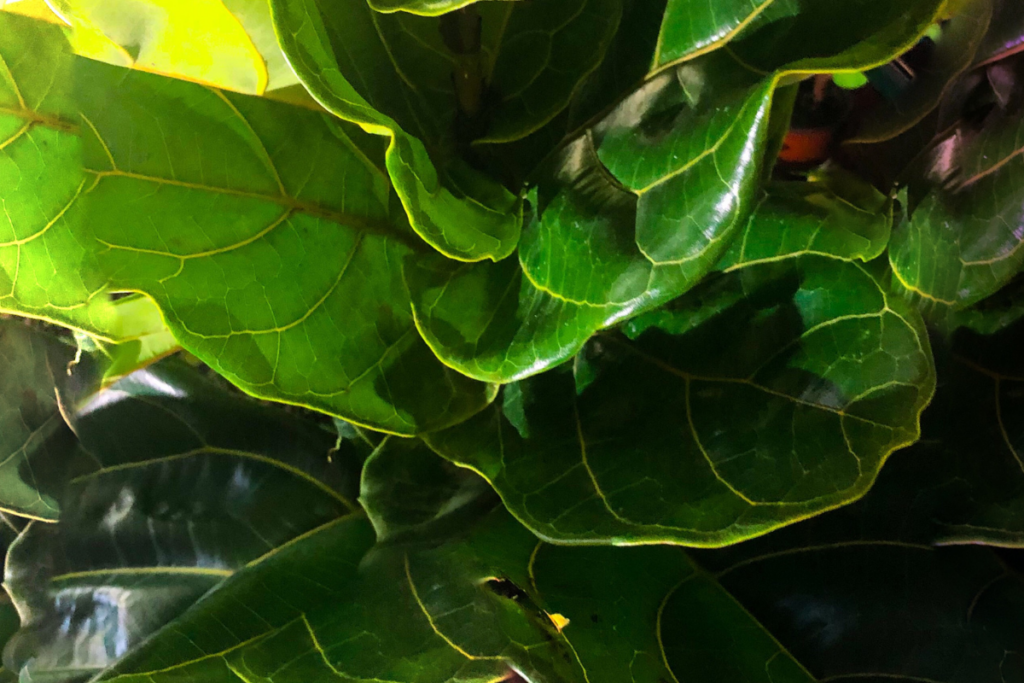
To the more experienced plant parent, a family of indoor trees would not be complete without the ficus. Also commonly known as the banana leaf ficus, it is a new plant in the houseplant market scene and a must-have on some plant collector’s lists.
Its foliage can be described as narrow, blade-like leaves that will initially sprout maroon in color and turn a vivid green. Like other ficus trees, this banana ficus will add a splash of warmth and tropics to your living space. Its drooping leaves can often add not only softness but also interest in texture to your own home.
This plant is especially receptive to pruning and can be manipulated to suit any desired design ideas for indoor garden aesthetics. This variety of ficus is not as finicky as compared to its cousins. They do not easily droop their leaves even if they encounter less-than-ideal living environments.
Aside from tolerating low light environments, they also tolerate wide temperature fluctuations, handling periodic excessive cold and heat very well. Compared to the other plants on this list, the only thing it will not tolerate well is its water requirements; this plant needs plenty of water and moist soil to thrive.
7. Dwarf Banana Tree
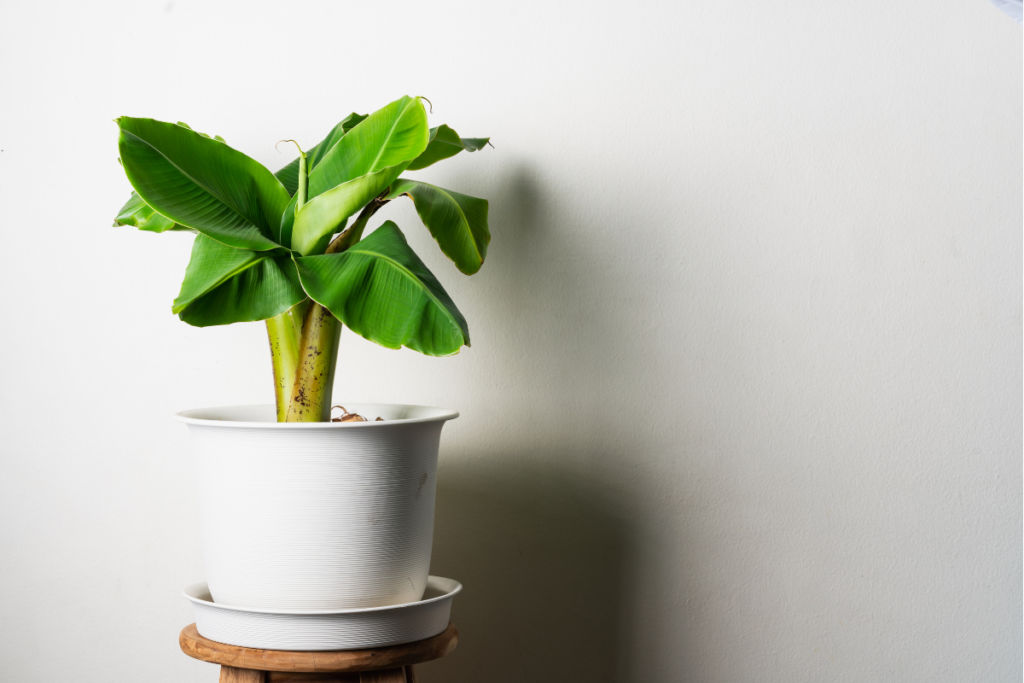
The dwarf banana tree, precisely the Dwarf Cavendish variety of Musa acuminata, is native to the South Pacific and regions in Southeast Asia. They are beautiful indoor trees characterized by oversized leaves that are shaped as paddles. The leaves have ruffled edges and sometimes contain purple blotches on the surface. However, these fade as they mature.
Banana plant leaves are known to be thin and prone to tearing. Thus, it is essential to roll them up in a newspaper during windy and cold days to provide protection from frost bites. The cover also leaves when they are moved from one place to another.
The Cavendish Banana grows two to three meters tall, with a spread of up to 1.5 feet. They thrive best in partial shade in windows facing south. It is important to keep the soil moist, but let it completely dry before watering. They are fast-growing plants.
RELATED: La Nature Est Belle! 43 Different Types Of French Trees
8. Corn Plant
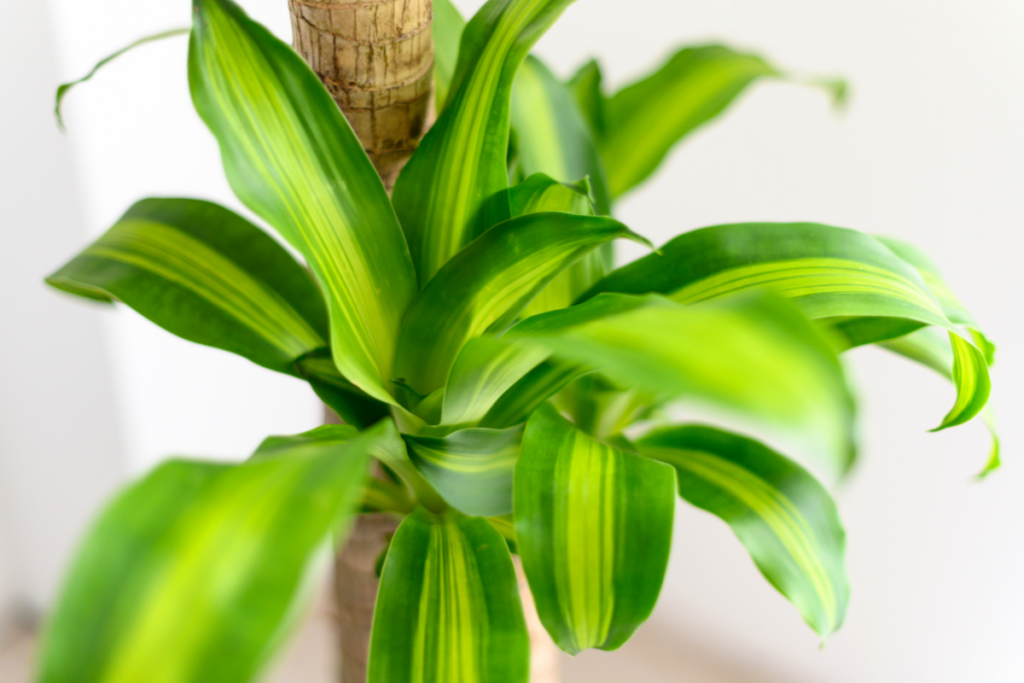
Also known as Dracaena fragrans, these plants serve as a compelling tree to add to your indoor family of houseplants. Like the other Dracaena on this list, it also has long and slender foliage that grows somewhat upwards from its thick stem. Its stems are reminiscent of corn and palm trees, and due to this, they are also sometimes called fake palms.
Aside from the shade of its foliage, its leaves would also develop wide yellow strips that run down the middle parallel to the leaves. However, just like palms, corn plants will droop their leaves growing down at the bottom, exposing their ribbed and thick stem that adds another layer of interest for the plant.
Just like most indoor trees on this list, this plant does not demand too much time and attention when it comes to its usual care. In fact, too much sunlight will burn its leaves and may eventually lead to growth stunting. For your corn plant to be healthy, you will need to pot it in a well-draining soil that stays moist but does not hold too much water.
They will also thrive happily in higher humidity environments. The only downside to this plant is that this plant is poisonous to cats and dogs and can be fatal if they ingest this plant.
9. Areca Palm
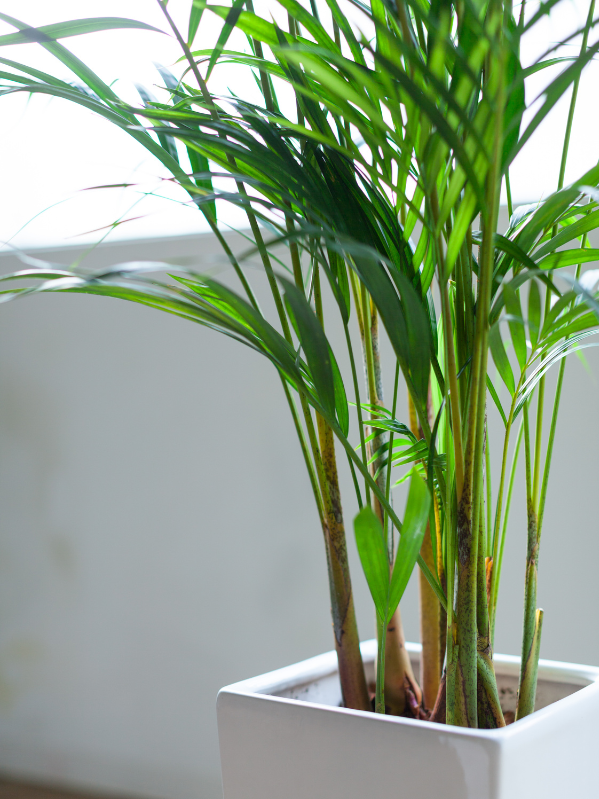
Areca Palms, known scientifically as Dypsis lutescens, are one of the most beautiful trees that you can grow indoors. They have slender stalks that are silvery green. These look like layers of feathery foliage since they are clustered together. The leaves are hanging like palms, from their upward bending stems.
The Areca Palms, also known as Butterfly Palm and Golden Cane Palm, are known to be native to Madagascar. Hence, they thrive best in warmer environments with mid to high humidity. They like indirect morning light and require watering 2-3 times a week, especially in the growing season. Like most trees, they are also slow growers.
10. Fiddle Leaf Fig

One of the most popular indoor trees is the Fiddle-leaf figs, with the scientific name Ficus lyrata. The common name refers to the shape of the leaves, which are shaped as violins. The tree has a tall, upright main trunk that branches off with large, green leaves, with a glossy surface. The leaves have a distinct criss-cross venation.
The Fiddle leaf fig is native to Western and Central Africa; hence, they prefer a warm and humid environment. The stems tend to bend towards the light. Hence it is beneficial to rotate the plant once a month in its position to maintain a consistent form.
The fiddle-leaf figs are also known as Banjo Figs. They can grow up to two to three meters tall, with a spread of 1.5 meters. Ambient sunlight is needed, and once a week watering. Like most figs, they are also slow growers.
11. Umbrella Tree
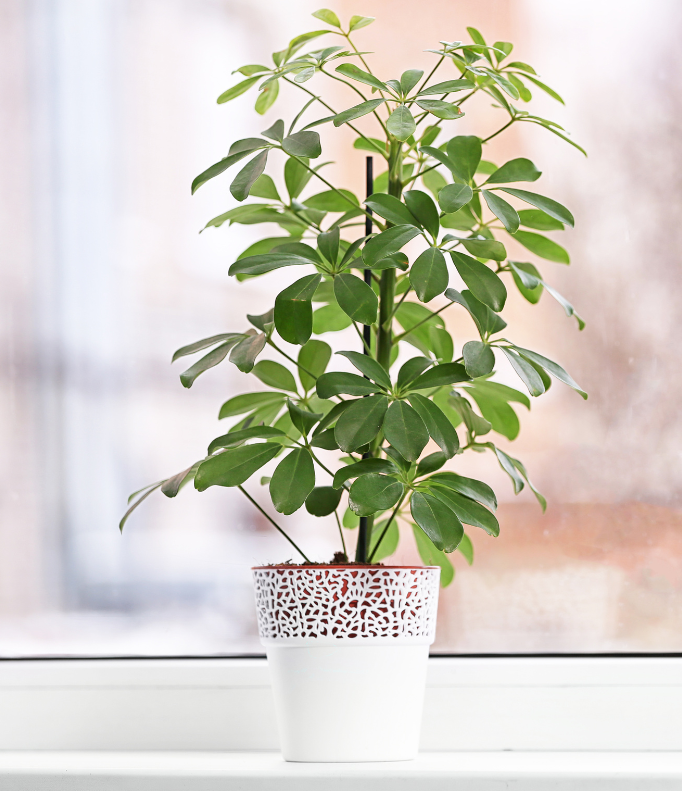
Another unique tree that can be grown indoors is the umbrella tree (Schefflera arboricola). The umbrella trees, with their common name, have foliage that splays as an umbrella. The leaves are dark green that are glossy, and round, growing from multiple, compact trunks. With this habit, the umbrella trees have a mesmerizing bushy appearance.
Native to Papua New Guinea and Australia, these trees thrive best in warm environments with a high humidity. However, they can be fussy in sudden temperature changes.
The umbrella tree can grow at an average height of 1.8 meters, with a spread of 1.2 meters. They dislike bright light and like indirect lighting from windows facing south or west. Avoid overwatering of this plant and only water when the topsoil is already dry. Unlike most trees, they are relatively fast growers.
12. Yucca Cane
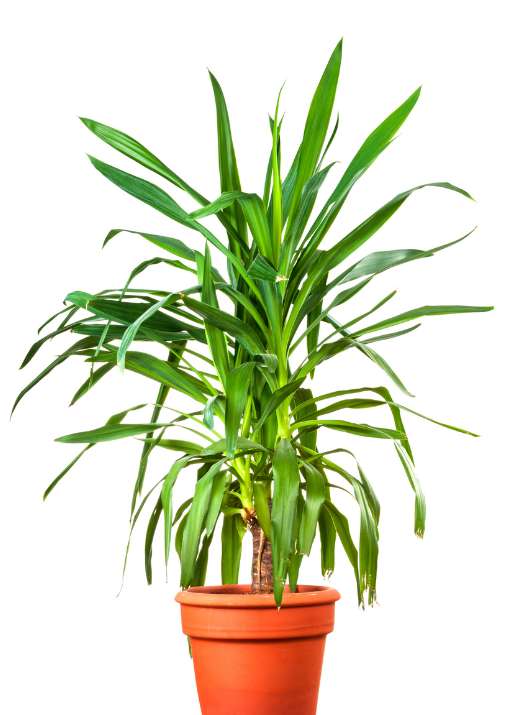
The Yucca Cane plant has a distinct form brought by the dramatic sword-like leaves that come out from a thick, rigid main trunk. With this form, this plant will give any space a contemporary, premium look.
This plant originates from Guatemala and Mexico. Hence they thrive best in a humid environment and average room temperatures, as per their natural habitat. However, they can also tolerate colder conditions.
The Yucca Cane plant is also commonly known as Spineless Yucca or Stick Yucca. They can grow up to three to 4.5 meters in height and a spread of 1.2 meters. Indirect light is preferred, specifically for windows facing south. They are watered once a week, allowing the topsoil to dry before thoroughly watering. They are slow growers.
13. Norfolk Island Pine

The Norfolk Island Pine is another gorgeous tree that will bring a tropical holiday vibe in your own spaces. This tree boasts of having symmetrical branches growing from slender trunks. The leaves are needle-like and delicate, typical of pine trees.
However, needle drops are also typical of pine trees; hence, it is essential to keep this plant in a humid environment all year round to prevent this problem. To maintain the necessary humidity level, you can put a pebble tray with water underneath the plant, or buy a humidifier.
The Norfolk Pine is also called the Australian pine. It can grow up to 0.9-2.4 meters in height and has a spread of 1.2 meters. Filtered light is the best choice for this tree, preferably from a window that faces south. You can water this tree once or twice a week, depending on the dryness of the soil. These are slow-growing trees.
14. False Aralia

The False Aralia tree, known as Schefflera elegantissima, is a dense and tall plant with a distinct texture from the soil to the tip due to the foliage. The foliage is dark-green, consisting of finger-like, narrow leaves with serrations at the edge.
This tree is a bit fussy in changing temperatures. The leaves easily drop when the temperature dips below the average room temperature. The stems also become leggy when put in very low light conditions.
The False Aralia is also called Spider Aralia. It can grow up to 1.2 meters in height and 0.6 meters in spread. Filtered, moderate light is best for this tree. Like most trees, they too are slow growers.
15. Money Tree
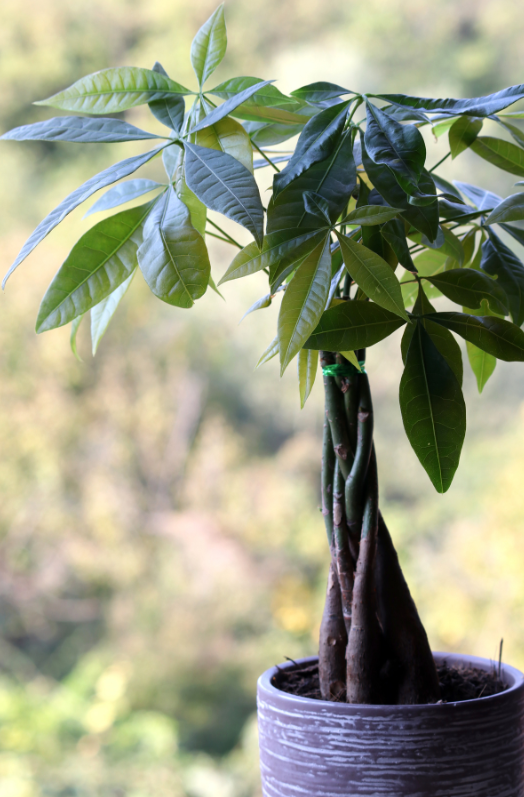
The Money Tree, scientifically known as Pachira aquatica, is a popular houseplant because of its low maintenance and beautiful foliage. The foliage features light-green leaves that are five-lobed and shaped like an umbrella. This plant is known to give good fortune and money to those having it.
You can see this plant sold with braided young trunks before they turn woody to give extra aesthetic value. This plant needs a lot of humidity to maintain its foliage. You can achieve it with pebble trays and regular mistings.
The Money tree is also known as Guiana Chestnut and Water Chestnut. Indoors, it can grow up to 1.5 meters in height and spread about half a meter. Filtered sunlight in the south windows is best. This tree is a fast-growing tree.
Trees do not need to be exclusively grown outside the garden alone. It is also definitely not the case that only trees that require a full sun can be grown inside your home. Hopefully, this short but comprehensive list of some of the more popular indoor low light indoor trees has piqued your interest in adding them to your own home. Either to compliment your already filled jungle or to serve as your centerpiece.
Frequently Asked Questions
- How much light does an indoor plant need?
Low-light indoor trees do not require direct, full sun, thus suitable for growing indoors. Indoor trees only need 100 to 500 foot-candles of light in order to thrive.
- Do LED lights help plants grow?
LED lights are efficient, user-friendly, and an effective way to provide light to indoor plants. It is more useful than incandescent lights or fluorescent lights. It has low-energy usage, low heat emission, and the color can be optimized for proper plant growth.
- What is indirect light for houseplants?
Indirect light is light that gets diffused or filtered by something in its path before it hits the plants. Sheer curtains, furniture, outside trees, or even other indoor plants that obstruct direct light can protect your low-light tolerant plants.
- Can a money tree survive in low light?
A money tree can surely survive low light conditions. However, as sunlight is needed for photosynthesis, low light means low productivity for the plants. Hence, the plant will grow more slowly than usual.
- Is it OK to sleep with plants in your bedroom?
Plants do not impose harm anywhere. It is a misconception that carbon dioxide emission from plants respiring will suffocate you at night. If anything, plants make any living space more relaxing and cozy.
Editor’s Recommendations
Top 10 Types of Elm Trees| Elm Tree Uses, Pictures and Identification Guide
Shrouded in Mystery: 37 Different Types Of Mystic Trees
La Naturaleza es Hermosa! 20 Different Types Of Mexican Trees







